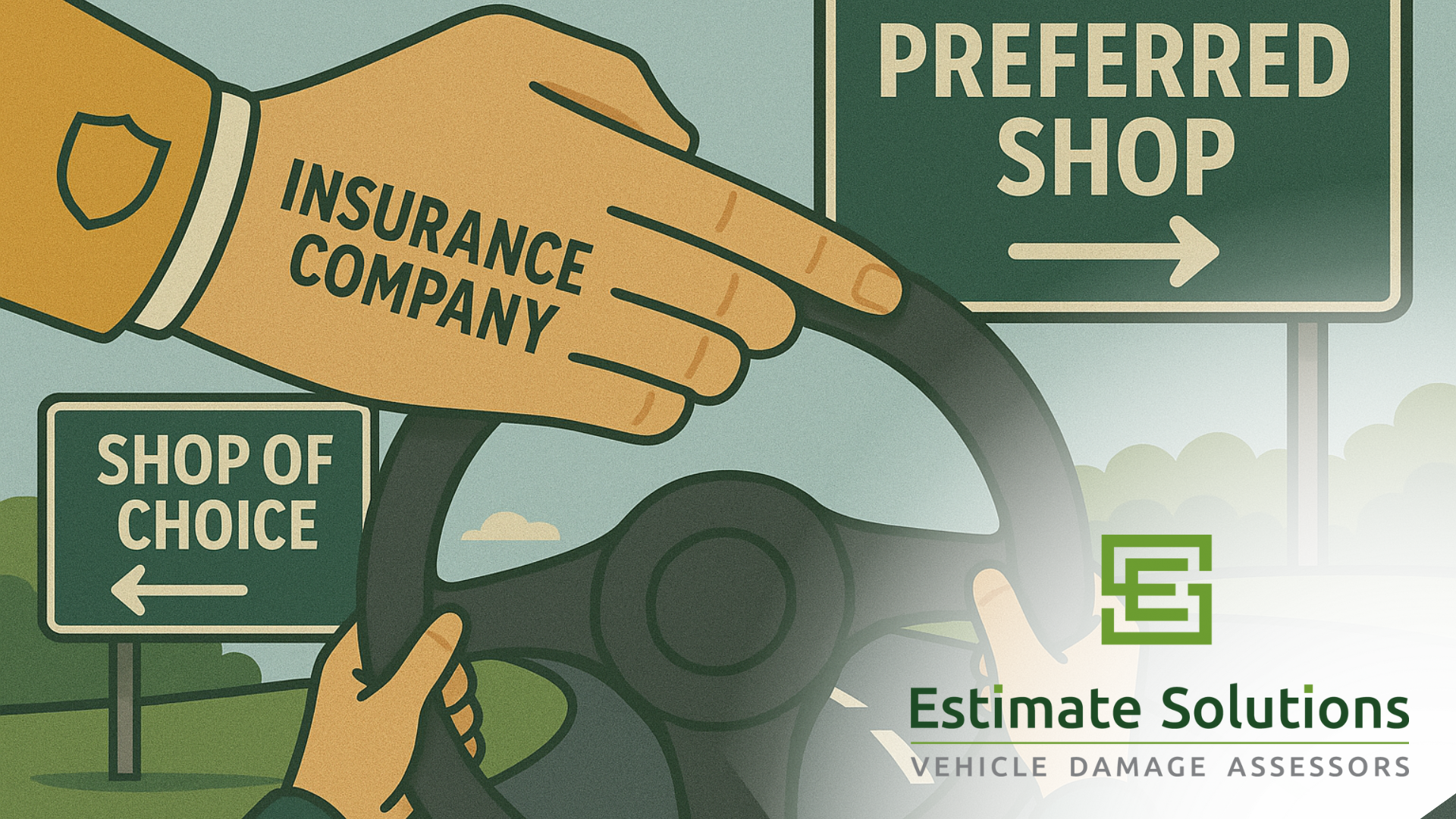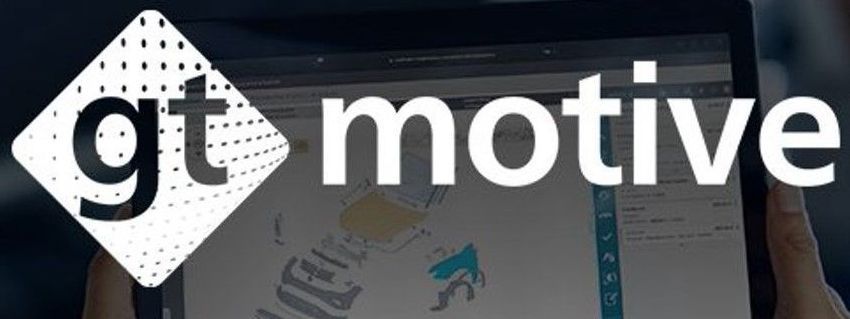Estimates That Work for You
Andrew Hill • 29 September 2025
Estimates That Work for You

Independent repairers face constant challenges: insurer pressure, slow payments, and under-valued work. For too long, skilled professionals have been fighting for fair recognition. Estimate Solutions was created to change that. Founded by Andrew Hill with over 38 years of experience in the accident repair industry, we bring clarity, compliance, and confidence to every estimate.
Who We Are
Estimate Solutions isn’t just another estimating service. We are partners to independent repairers. With over 20 years of operation and more than 30,000 estimates completed, we know the obstacles you face. We’ve lived them ourselves. Our service is about more than numbers — it’s about fairness, transparency, and protecting the profits of those who deserve it.
The Process That Works
Our process is simple but effective. Using our Online Portal, repairers can upload job details quickly and securely. Within 8 hours, our team of licensed Audatex professionals delivers an accurate, compliant estimate. We liaise directly with insurers to secure faster approvals, saving you time and stress. For those who need financial flexibility, invoice factoring is available to ensure immediate payment. And with our referral scheme, repairers can benefit from supporting others.
The Profit Protected Guarantee
From day one, our guarantee has been clear: if we don’t add more value to your invoice than we cost, the estimate is free. This commitment underpins everything we do. It ensures repairers can trust that every estimate delivers real value, and that their investment is always worthwhile.
Benefits for Repairers
Repairers working with us report faster approvals, better cash flow, and stronger relationships with insurers. By having a trusted partner handle the estimating and negotiations, they can focus on what matters most: repairing vehicles to the highest standard and running a profitable business.
Benefits for Insurers
Insurers also gain from working with Estimate Solutions. Our estimates are clear, compliant, and defensible. That means fewer disputes, quicker resolutions, and a more efficient process for everyone involved. We bridge the gap between repairers and insurers, making the entire system work more smoothly.
Industry Impact
The repair industry has often been clouded by imbalance and unfair practices. Estimate Solutions is working to change that. By levelling the playing field, we’re helping to create an industry that recognises skill, supports fairness, and builds trust. Our role as mediators and sense-checkers ensures that both repairers and insurers benefit from transparency.
Conclusion
Independent repairers deserve better — and with Estimate Solutions, they get it. From fast, accurate estimates to financial support and a guarantee of value, we provide services that empower repairers and protect profits. We stand shoulder-to-shoulder with those we serve, building a stronger, fairer, and more profitable industry for everyone.

A vehicle damage estimate sets the tone for everything that follows: cost, method, safety, cycle time and the relationships between repairer, insurer and customer. When it’s accurate, compliant and well‑evidenced, approvals flow and margins hold. When it’s vague or optimistic, queries multiply and profits slip. At Estimate Solutions, we help teams produce estimates that deliver clarity, compliance and confidence, consistently and at speed. Partnering with Repairers, Protecting Profits. The independent repairer’s trusted estimating partner — delivering clarity, compliance, and confidence with every job. The Estimate’s Job (and Why It Matters) An estimate is a structured statement of work: damage identified, methods selected, labour and parts required, materials, calibrations and cost. It is not a placeholder to be “tidied up later”. In a UK market where insurers require compliance and repairers must protect margin, a strong estimate is the common truth everyone can align around. The Essentials of a Good Estimate 1) Capture Damage with Discipline Work methodically inside and out. Record impact points and deformation paths, especially around structures, looms and ADAS sensors. Separate accident damage from pre‑existing defects (stone chips, corrosion, prior poor repair). Take clear, timestamped images: overviews, impact close‑ups, panel edges and gaps. In systems such as Audatex, enter only what you can justify, every line should map to evidence, method or measurement. 2) Let Method Drive the Money Anchor tasks in recognised procedures (manufacturer data or Thatcham). Note bonding, rivet patterns, torque values, heat control and corrosion protection. Modern vehicles combine HSS, aluminium, composites and bonded structures—if the procedure mandates replacement, the estimate should reflect that. Include ADAS resets and calibrations with clarity on who performs them and when. When method drives labour and parts, approvals come faster. 3) Labour That Stands Up Use credible times and split labour correctly (panel, paint, M&E, structural). Consider legitimate complexities: trim remove/refit, access, non‑standard fixings, EV/HEV isolation and ADAS implications. Avoid habitual add‑ons, if you always add the same block of time regardless of model, expect pushback. A good estimate reads like a planned job card, not a wish list. 4) Parts: Correct, Complete, Considered Verify numbers and supersessions, and justify new vs repair vs reclaimed where appropriate. Handle clips, fixings and minor components transparently to avoid rekeys. Think ahead about paint‑blend impact when selecting adjacent panel strategy; explain why. 5) Paint and Materials: Explain the “Why” Use recognised paint calc models. Call out colour complexity (tri‑coat, special finishes), blends and any extra process steps. Include materials realistically, primer, clear, thinners, tapes, masking, protective films and corrosion protection. When the paint story is obvious in the estimate, non‑technical reviewers need fewer queries. 6) Compliance Built‑In Compliance is protection—for you and the customer. Show traceability from damage to method to cost. Include safety‑critical operations (EV/HEV isolation, torque checks, ADAS calibration). Align with insurer protocols and your quality system (e.g., BS 10125 processes, where applicable). Make VAT and any excess/contribution treatment explicit. If it reads audit‑ready, it’s approval‑ready. 7) Evidence Pack: Enough, Not Excess You don’t need 300 photos, you need the right set. Before repair: vehicle ID, overviews, impact, edges/gaps, sensor areas. Method references: key screenshots or citations where they materially affect cost or safety. For supplements/sign‑off: show the hidden damage or calibration results. When narrative and images match, engineers say “yes”. Speed Without Sloppiness Turnaround matters, but rushing creates rework. Industrialise quality instead: - Templates that prompt common operations (EV safety, ADAS, corrosion protection). - Checklists to catch low‑value, high‑friction items (clips, trims, code clears). - Standard photo sets so every job starts with adequate evidence. At Estimate Solutions we aim for a rapid turnaround while maintaining standards, we typically provide an 8‑hour turnaround on estimates, because a fast, accurate “yes” beats a hurried “maybe”. The Hidden Cost of Weak Estimates Weak estimates create avoidable cost and delay: 1. Approval drag from poorly justified lines. 2. Rekeys due to wrong parts or unrealistic times. 3. Supplements when calibrations or protection steps were missed originally. 4. Margin leakage from under‑claimed labour or materials. 5. Reputation risk when customers sense dithering or inconsistency. Avoiding this isn’t about padding; it’s about building it right first time. A Lean Pre‑Submission Checklist Vehicle & Damage [ ] Reg/mileage/VIN; claim refs [ ] Clear photo set (overviews, impact, edges/gaps, sensors) [ ] Pre‑existing damage noted Method & Safety [ ] OEM/Thatcham procedure referenced [ ] EV/HEV isolation considered [ ] ADAS implications + calibration plan [ ] Corrosion protection/bonding/rivets/torque values allowed for Labour, Parts, Paint [ ] Credible times split by category [ ] Parts verified incl. clips/fixings [ ] Paint calc + blends justified Compliance & Clarity [ ] VAT/excess/contributions explicit [ ] Notes explain any deviations [ ] Evidence aligns with narrative If you can tick these with confidence, you’re close to “approved”. Communicating With Insurers (and Their Engineers) Meet engineers in the language of evidence and safety: - Lead with method: “OEM procedure X requires replacement of Y due to HSS construction.” - Show safety thinking: “Battery isolation and post‑repair health checks included due to hybrid architecture.” - Quantify finishing: “Colour is tri‑coat; blending into adjacent panels is required for an OEM‑equivalent finish.” - Provide proof: “Photos 7–12 show loom damage; loom section and routing time included per spec.” Clarity shortens the distance to “yes”. Supplements: Handle With Care Hidden damage happens. Keep trust by: - Flagging early with concise notes and images. - Updating method references where the approach must change. - Keeping supplements proportional and clear, don’t bury small items in large, unrelated adjustments. - Maintaining the same standard as the original estimate. EVs and ADAS: The New Normal Modern vehicles are sensor‑rich and software‑dependent. Three implications: 1. Pre‑repair planning: safe isolation, protection of sensitive components and materials. 2. Integrated process: calibrations and code clears are integral, not optional extras. 3. Documentation discipline: record calibrations and retain results. Good estimates treat these as routine requirements, not edge cases. Protecting Profit (Without Raising Eyebrows) Profit protection isn’t adding fluff, it’s claiming legitimate work: - Charge for skill actually used. Careful dismantling, protection and re‑assembly to method is skilled labour. - Don’t donate materials. Masking, clips, fixings, corrosion protection and consumables add up. - Fight rework, not customers. Under‑claiming time triggers rushed jobs and comebacks that cost far more than any queried minutes. Insurers respond well to accuracy and honesty. So do customers. Build a System, Not a Hero Culture The best estimating teams rely on process, not heroics: - Refresh method knowledge regularly. - Maintain template libraries for common damage types and EV/ADAS scenarios. - Peer‑review complex jobs a second pair of eyes prevents misses. - “Show your working.” If a line can’t be justified, it shouldn’t be there. This is how you achieve speed and quality at the same time. Final Thought: When to Call in Estimate Solutions If you don’t have the time to build every estimate this way, aren’t fully confident with repair methods and ADAS/EV requirements, or you feel you’re not getting the value you should from a repair, bring us in. Bring Us In If You’re Experiencing • Time pressure: bays are full, approvals are slow, and estimating slips to the end of the day. • Insurer pushback: repeated queries on labour, blends, calibrations or methods. • EV/ADAS uncertainty: you want every safety‑critical step included and evidenced. • Margin leakage: legitimate clips, corrosion protection and code clears keep getting missed. • Staff gaps: holidays, sickness or recruitment mean you need cover. • No Audatex access: you still need compliant, insurer‑ready estimates fast. What We’ll Deliver • Professional Audatex estimates that are method‑correct, evidence‑led and audit‑ready. • Insurer‑ready notes explaining the ‘why’ behind key lines. • ADAS/EV lines and documentation handled properly from the start. • Predictable speed: a rapid 8‑hour turnaround on estimates. • Profit protection: no padding just capturing legitimate labour, materials and consumables. • Supplement support: clear, timely updates when hidden damage appears. • A smooth process via our Online Portal designed to make life easy. Ready to Make Estimating Easy? Use our Online Porta l designed to make life easy to submit your next job in minutes. Prefer to talk first? Get in touch via the website and one of our experienced VDAs will respond promptly. Partnering with Repairers, Protecting Profits. The independent repairer’s trusted estimating partner — delivering clarity, compliance, and confidence with every job.

Let’s talk about something that’s slowly starting to create friction with a lot of repairers. But yet, it is seen as “standard practice.” Collection / Satisfaction Notes. They’ve been around for Donkeys Years. A customer signed to confirm they were happy with the repair. Simple. Fair. Sensible. But now, that same note has become something else entirely. It’s being used by some insurers as a reason to delay or withhold payment. And that’s a problem worth talking about. What These Notes Were Meant to Do Originally, the process was straightforward. The piece of paper was about customer satisfaction, a quick check and signature to confirm the repair was complete and the work was up to standard. But as the industry’s evolved, that original purpose has been lost. We now have digital job systems, photo documentation, delivery records, and timestamped communication. Everything an insurer could possibly need to confirm a job’s been completed already exists. And yet, repairers are still being told: “Payment can’t be processed until the Collection / Satisfaction Note is received.” So what started as a safeguard for quality has quietly turned into a tool for delay. What They’ve Become In many cases, these notes don’t even mention satisfaction anymore. They simply confirm the car’s been collected or delivered. So, let’s be honest, if the repair’s done, the customer’s got the car back, and the insurer already has full job records what are these notes really achieving? Because right now, they’re not protecting customers. They’re protecting cash flow, just not for the repairer. Each missing form becomes another administrative reason to hold back payment, and every delay puts more financial pressure on businesses that have already done the work. It’s an outdated process with real-world consequences. The Real Impact For repairers, this isn’t about paperwork — it’s about getting paid for completed work. Every unnecessary delay has a huge impact on the businesses and people actually delivering the service. Jobs are finished. Cars are collected. Invoices are sent. But payment still sits in limbo because a single outdated form hasn’t been ticked off. In an industry already facing tight margins, that’s not just inconvenient — it’s unsustainable. Where We Go From Here The industry has moved on. We’ve got better systems, stronger documentation, and more transparency than ever before. What we don’t need are processes that exist purely because they always have. If the intention behind these notes was customer satisfaction, there are better ways to confirm that. If it’s proof of delivery, there are cleaner digital solutions already in place. At this point, Collection / Satisfaction Notes don’t add value — they add delay. The Bigger Picture This isn’t about pointing fingers. It’s about recognising that old paperwork can’t keep pace with modern processes in place within the industry. When insurers hold up payments for admin that adds no real value, it doesn’t protect the process, it damages it. And ultimately, it puts unnecessary strain on repairers who’ve already upheld their side of the agreement. It’s time to start asking: What actually helps the customer? What supports the repairer? And what just slows everything down? Because if a note designed to confirm satisfaction now creates frustration, then maybe the system needs to evolve, not the paperwork.




